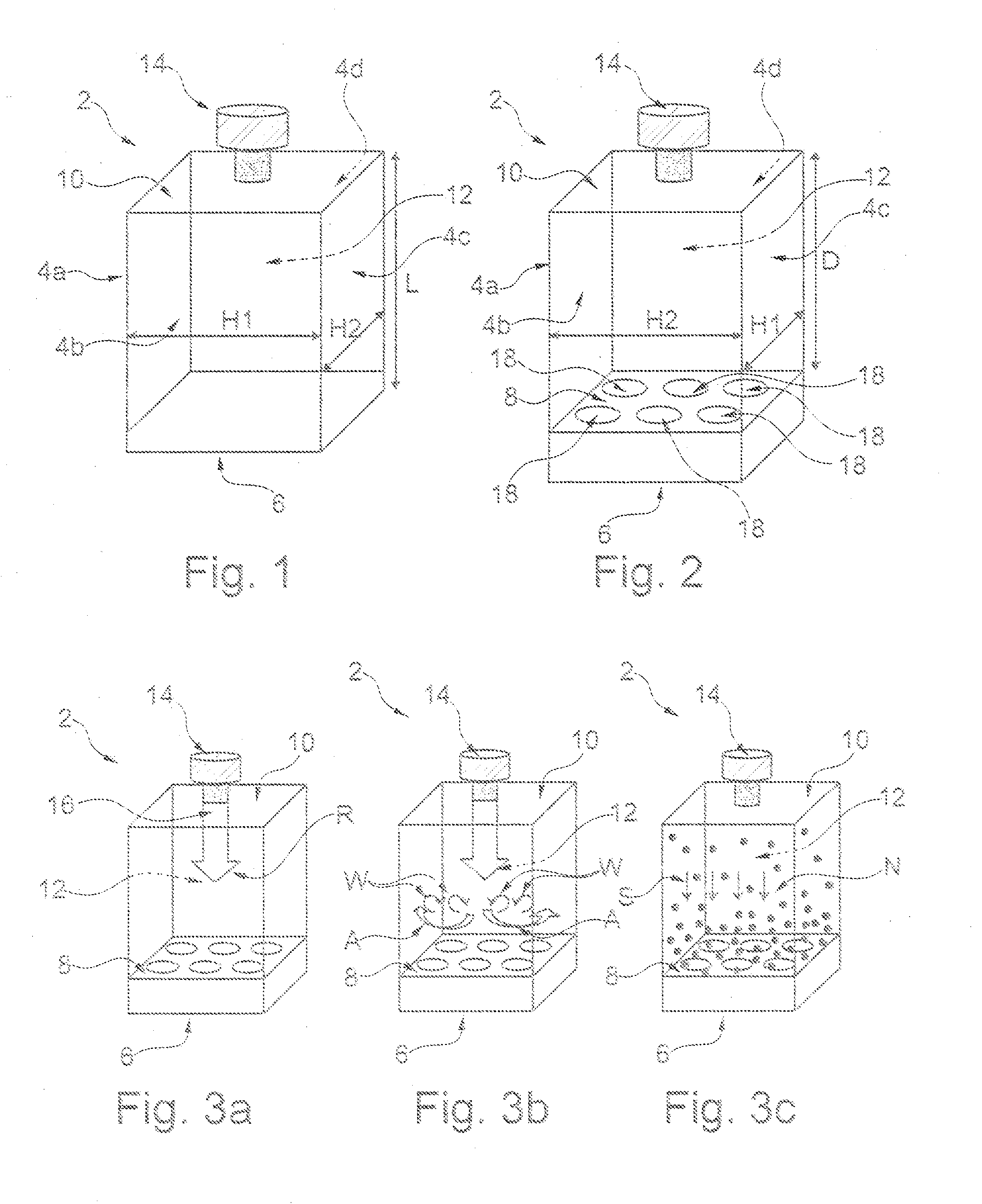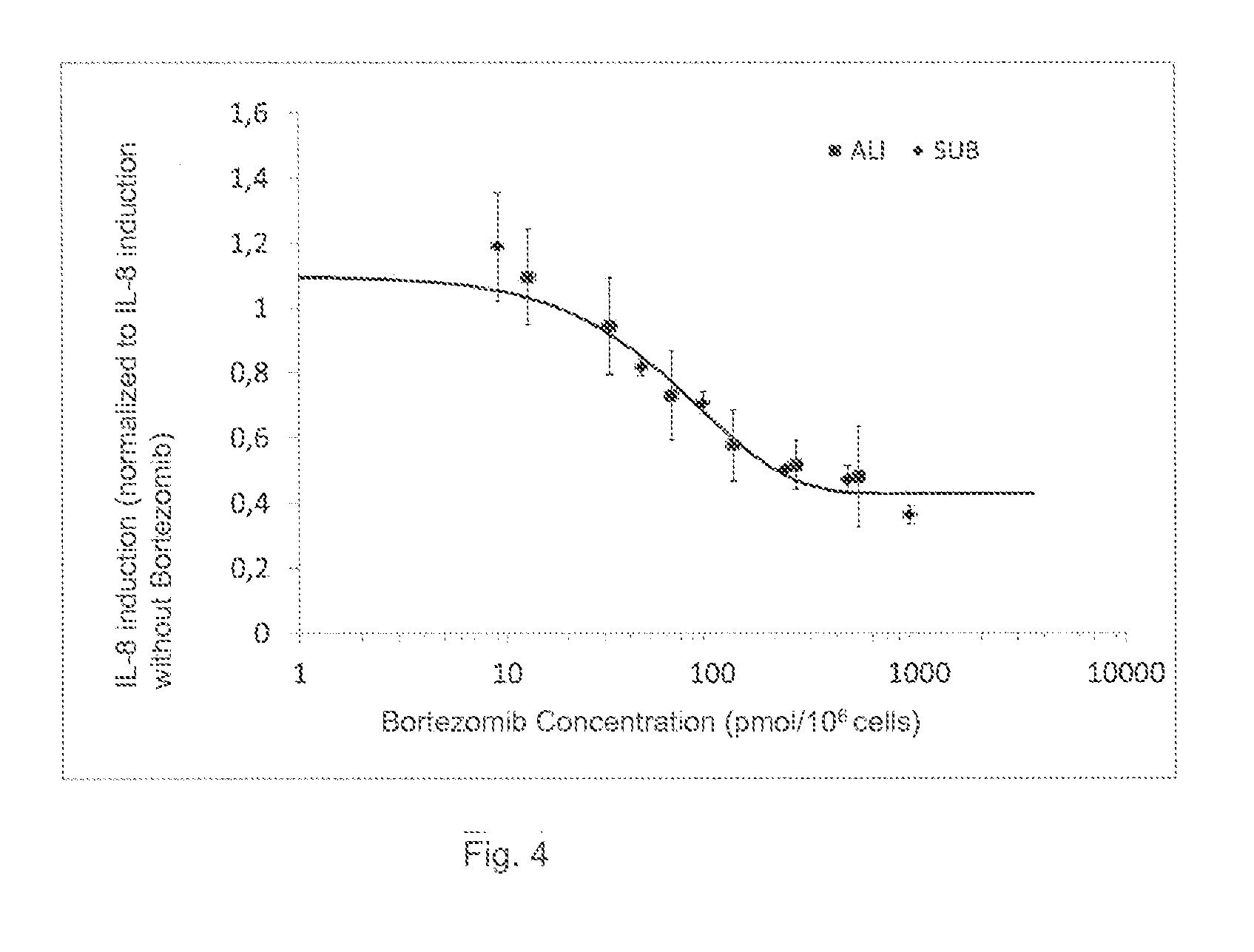Device and method for wetting a sample with an aerosol
a technology of aerosol and sample, which is applied in the field of wetting samples with aerosol, can solve the problems of ali cell culture use in pharmaceutical studies and experiments, unrealistic situation, and physiological unrealistic immersion of such cells in cell medium, and achieves improved ease of handling, easy sterilization, and high sensitivity
- Summary
- Abstract
- Description
- Claims
- Application Information
AI Technical Summary
Benefits of technology
Problems solved by technology
Method used
Image
Examples
Embodiment Construction
[0137]Below, an exemplary device and an exemplary method are exemplified. FIG. 1 shows a first embodiment of a device 2 for wetting at least one sample with a substance. The device 2 essentially features vertical side walls 4a, 4b, 4c and 4d. In the illustrated form, these essentially vertical side walls 4a, 4b, 4c and 4d essentially form right angles to each other. Although this is preferred, it is not necessary. Alternatively, it is possible that device 2 has a different number of essentially vertical side walls 4a, 4b, 4c and 4d. For example, it is conceivable that only three side walls are provided, which each form between them an angle of about 60°. Likewise, more than four side walls can be provided, for example, 5, 6, etc. It is also conceivable that only one continuous wall is provided, for example in the form of a cylinder. The angles between the vertical side walls 4a, 4b, 4c and 4d can also vary. Finally, it may be preferred that the side walls are not essentially vertica...
PUM
 Login to View More
Login to View More Abstract
Description
Claims
Application Information
 Login to View More
Login to View More - R&D
- Intellectual Property
- Life Sciences
- Materials
- Tech Scout
- Unparalleled Data Quality
- Higher Quality Content
- 60% Fewer Hallucinations
Browse by: Latest US Patents, China's latest patents, Technical Efficacy Thesaurus, Application Domain, Technology Topic, Popular Technical Reports.
© 2025 PatSnap. All rights reserved.Legal|Privacy policy|Modern Slavery Act Transparency Statement|Sitemap|About US| Contact US: help@patsnap.com


